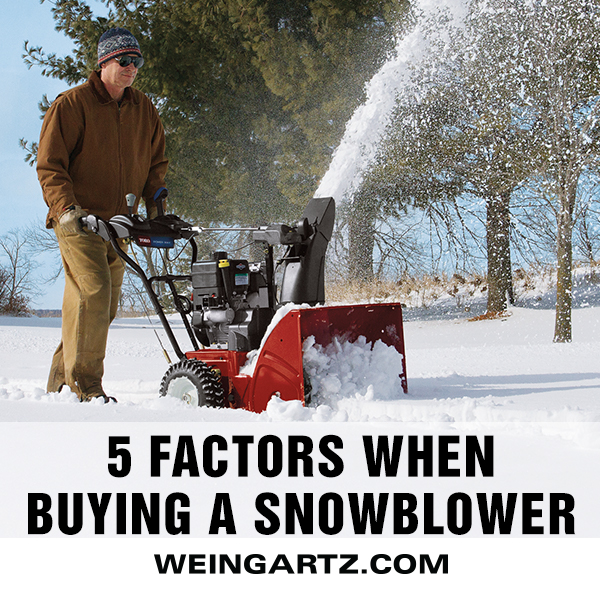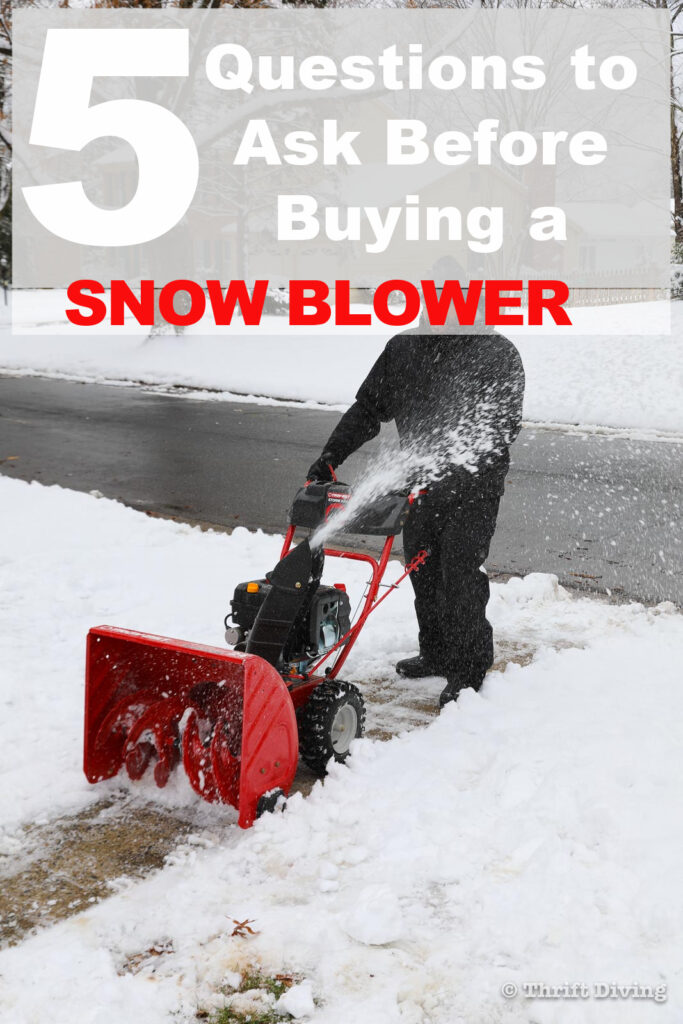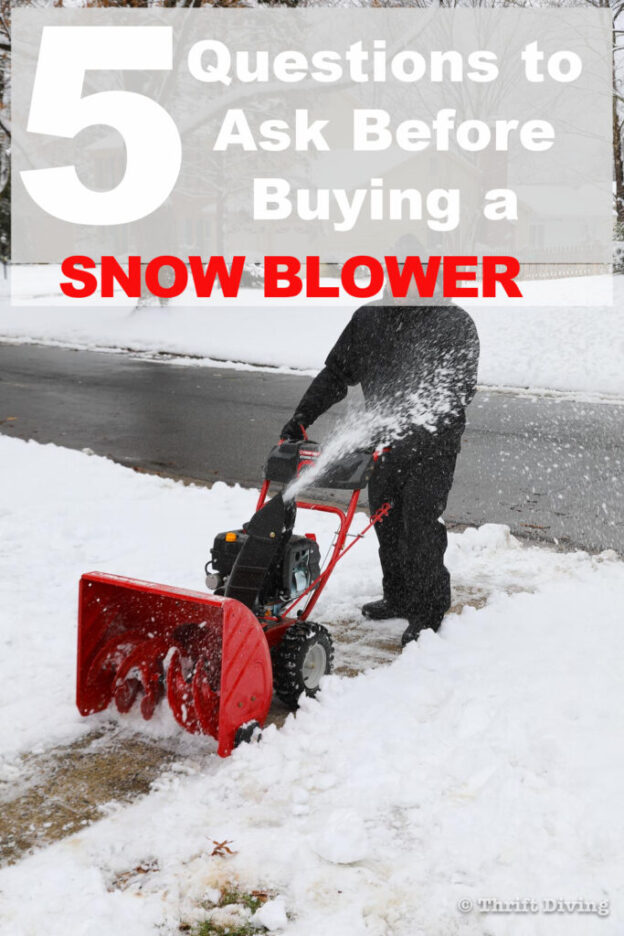Are you tired of spending hours shoveling snow during those cold winter months? If so, then it’s time to consider investing in a snowblower. But with so many options available on the market, how do you know which one is right for you? In this article, we will explore the key features and factors to consider when choosing a snowblower. From the size and power to the type of snow it can handle, we’ve got you covered. Say goodbye to back-breaking labor and say hello to a more efficient and convenient snow removal experience.

This image is property of techlifetoday.nait.ca.
Power Source
Gas-powered snowblower
A gas-powered snowblower is a popular choice for many homeowners due to its reliability and power. These snowblowers are typically larger and more heavy-duty, making them suitable for clearing large amounts of snow. They are also great for areas without access to electricity, as they don’t require an outlet to operate. Gas-powered snowblowers are known for their ability to handle wet and heavy snow, making them a great option for those living in regions with severe winter weather.
Electric snowblower
Electric snowblowers are a convenient option for homeowners with smaller driveways or less snow accumulation. These snowblowers are typically lighter and more compact than gas-powered ones, making them easier to maneuver and store. Electric snowblowers are also quieter and require less maintenance than their gas-powered counterparts. They are an environmentally friendly choice, as they don’t produce any emissions during operation. However, it’s important to note that electric snowblowers may not have the same amount of power as gas-powered ones, so they may struggle with heavy or wet snow.
Clearing Width
Single-stage snowblower
A single-stage snowblower is designed for light to moderate snowfall. They have a smaller clearing width, typically ranging from 18 to 22 inches. Single-stage snowblowers utilize an auger to scoop up and throw snow out of the chute in one motion. These snowblowers are great for smaller driveways and walkways, as they are compact and easy to maneuver. However, they may struggle with clearing heavy or deep snow, as their auger doesn’t have as much power as those in two-stage or three-stage snowblowers.
Two-stage snowblower
Two-stage snowblowers are a step up from single-stage ones in terms of power and clearing capability. They have an additional feature called an impeller that helps throw the snow out of the chute. Two-stage snowblowers are capable of handling heavier snowfall and can clear wider paths, typically ranging from 24 to 30 inches. They are suitable for medium-sized driveways and areas with more frequent or heavier snow accumulation. Two-stage snowblowers are equipped with larger engines, making them more powerful and efficient at clearing snow.
Three-stage snowblower
For homeowners living in regions with consistently heavy snowfall, a three-stage snowblower is the ultimate option. These snowblowers have an additional feature called an accelerator, which works alongside the auger and impeller to break up and move snow more effectively. Three-stage snowblowers have the widest clearing width, ranging from 30 to 36 inches, and are capable of handling deep and heavy snow. They are typically larger and more expensive than single-stage or two-stage snowblowers, making them suitable for larger properties or commercial use.
Clearing Depth
Clearing height
The clearing height of a snowblower refers to the maximum height of snow it can handle. This is an important consideration, especially if you live in an area with frequent heavy snowfall. It’s crucial to choose a snowblower with a clearing height that exceeds the average snow depth in your region. This ensures that your snowblower will be able to effectively clear the snow without getting overwhelmed or clogging. The clearing height is often listed in the product specifications and can vary depending on the model and type of snowblower.
Intake height
The intake height is another important factor to consider when choosing a snowblower. It refers to the height at which the snowblower can effectively scoop up snow into the chute. Similar to the clearing height, the intake height should be able to handle the average depth of snow in your area. Having a sufficient intake height ensures that your snowblower will be able to clear the entire depth of snow in one pass, saving you time and effort. Like the clearing height, the intake height can vary depending on the model and type of snowblower.
Auger Design
Straight auger
A straight auger is the most common design found in snowblowers. It consists of a single spiral-shaped blade that rotates and scoops up the snow, directing it towards the chute for discharge. Straight augers are versatile and suitable for most snow conditions, including light, fluffy snow as well as wet and heavy snow. They are efficient at breaking up and moving snow, providing effective clearing performance.
Serrated auger
A serrated auger features additional teeth or edges on the blade, providing enhanced snow cutting capabilities. The serrated edges help break up compacted or icy snow, making them ideal for areas with frequent snowfall or where the snow tends to be more dense. Serrated augers excel at cutting through challenging snow conditions, ensuring a clean and efficient clearing process.
Curved auger
Curved augers are designed to help propel the snowblower forward while clearing the snow. The curved shape of the auger assists in pulling the snowblower, making it easier to maneuver and reduce operator effort. This design is particularly beneficial for larger snowblowers or areas with heavy snow accumulation. Curved augers also provide improved performance on uneven surfaces, ensuring consistent clearing throughout.

This image is property of www.cubcadet.ca.
Drive System
Auger-propelled snowblower
An auger-propelled snowblower is a popular choice for homeowners who prefer a self-propelled option. In this drive system, the rotation of the auger helps propel the snowblower forward. This makes it easier to navigate through thick snow and reduces the physical effort required by the operator. Auger-propelled snowblowers are typically found in two-stage and three-stage models, offering increased power and efficiency.
Wheel-propelled snowblower
A wheel-propelled snowblower utilizes wheels to drive the machine forward. This drive system is commonly found in Single-stage snowblowers, as their lighter weight and smaller size make them easier to push manually. Wheel-propelled snowblowers are typically more affordable and suitable for smaller properties or areas with minimal snow accumulation.
Track-propelled snowblower
Track-propelled snowblowers are designed for maximum traction and stability. Instead of wheels, these snowblowers use tracks similar to those found on tanks or heavy machinery. The track system provides superior grip on icy or uneven surfaces, making track-propelled snowblowers ideal for challenging terrains. They are commonly found in larger and more heavy-duty models, ensuring reliable performance in adverse conditions.
Control Features
Electric start
Electric start is a convenient feature that allows you to start the snowblower with the push of a button, eliminating the need for manual pulling of a recoil cord. This is especially beneficial in colder climates where the recoil start may be more difficult. With electric start, you can quickly and effortlessly begin clearing snow without any hassle.
Electric chute control
Electric chute control allows you to change the direction or angle of the snow discharge chute with ease. Instead of manually adjusting the chute, electric chute control enables you to adjust the direction using a control panel or joystick. This feature is particularly useful when dealing with different wind directions or when clearing snow in tight spaces.
Power steering
Power steering is a valuable feature, especially for larger and heavier snowblowers. It assists in maneuvering the machine by automatically adjusting the direction of the front wheels, making it easier to turn and navigate. With power steering, you can effortlessly navigate around obstacles or corners, reducing operator effort and fatigue.

This image is property of i.ytimg.com.
Snow Discharge Direction
Single chute
A single chute is the most common type of snow discharge direction found in snowblowers. It allows for snow to be discharged in one direction, usually to the side. Single chute snowblowers are suitable for most residential applications, as they effectively clear snow to the desired area. They are easy to operate and offer simplicity in snow removal.
Dual chute
Dual chute snowblowers have the ability to discharge snow in two different directions simultaneously. This allows for greater flexibility and efficiency when clearing large areas or when working in tight spaces. Dual chute snowblowers are particularly useful when the snow needs to be thrown in opposite directions or when creating a pathway through a large snowbank.
Price Range
Budget-friendly snowblowers
Budget-friendly snowblowers are often entry-level models that offer basic functionality at an affordable price. These snowblowers are suitable for homeowners with smaller driveways or areas with less frequent snowfall. While they may lack some of the advanced features and power found in higher-end models, they still provide efficient snow clearing capabilities at a fraction of the cost.
Mid-range snowblowers
Mid-range snowblowers offer a balance between affordability and performance. They often have more power and features compared to budget-friendly models, making them suitable for medium-sized properties or areas with moderate snow accumulation. Mid-range snowblowers provide reliable performance and durability without breaking the bank.
High-end snowblowers
High-end snowblowers are designed for professional use or homeowners with large properties and heavy snowfall. These snowblowers offer top-of-the-line features, advanced technology, and exceptional performance. They are built to withstand demanding conditions and provide efficient snow clearing even in the harshest winter weather. High-end snowblowers come with a higher price tag but provide unmatched power, durability, and convenience.

This image is property of www.weingartz.com.
Durability and Build Quality
Material of construction
When evaluating the durability and build quality of a snowblower, it’s important to consider the materials used in its construction. Look for snowblowers made from high-quality materials such as heavy-duty steel or reinforced plastic. These materials are designed to withstand the rigors of snow clearing and are less likely to experience wear and tear over time. It’s also worth considering models with rust-resistant coatings or components, especially if you live in an area with frequent exposure to moisture or salt.
Warranty
A reliable warranty is another important aspect to consider when assessing the durability and build quality of a snowblower. A longer warranty period indicates that the manufacturer has confidence in their product and is willing to stand behind it. Look for warranties that cover both parts and labor, as well as any engine-specific warranties. A good warranty provides peace of mind and reassurance that in the event of any defects or issues, you will be protected and supported.
Storage and Portability
Size and weight
The size and weight of a snowblower play a crucial role in its storage and portability. Consider the dimensions and weight of the snowblower to ensure that it can be comfortably stored in your designated space, such as a garage or shed. Smaller and lighter snowblowers are easier to maneuver and transport, making them more suitable for homeowners with limited storage space or those who need to regularly transport the snowblower.
Foldability
Some snowblowers offer foldable features that allow for more compact storage. These models typically have folding handles or adjustable parts that can be collapsed, reducing the overall size of the snowblower when not in use. Foldable snowblowers are particularly beneficial for those with limited storage space or for those who need to transport the snowblower in a vehicle.
Wheels
The type and quality of wheels on a snowblower can greatly affect its maneuverability and portability. Look for snowblowers with sturdy and durable wheels that can easily handle various terrains, including pavement, gravel, and uneven surfaces. Additionally, some snowblowers offer features like wheel locks or track systems that provide increased traction and stability, making them easier to push or operate in challenging conditions.
In conclusion, choosing the right snowblower involves considering several factors such as power source, clearing width, clearing depth, auger design, drive system, control features, snow discharge direction, price range, durability and build quality, and storage and portability. By evaluating these aspects and matching them to your specific needs and preferences, you can find a snowblower that will efficiently and effectively clear snow from your property, making winters more manageable and enjoyable.

This image is property of thriftdiving.com.
